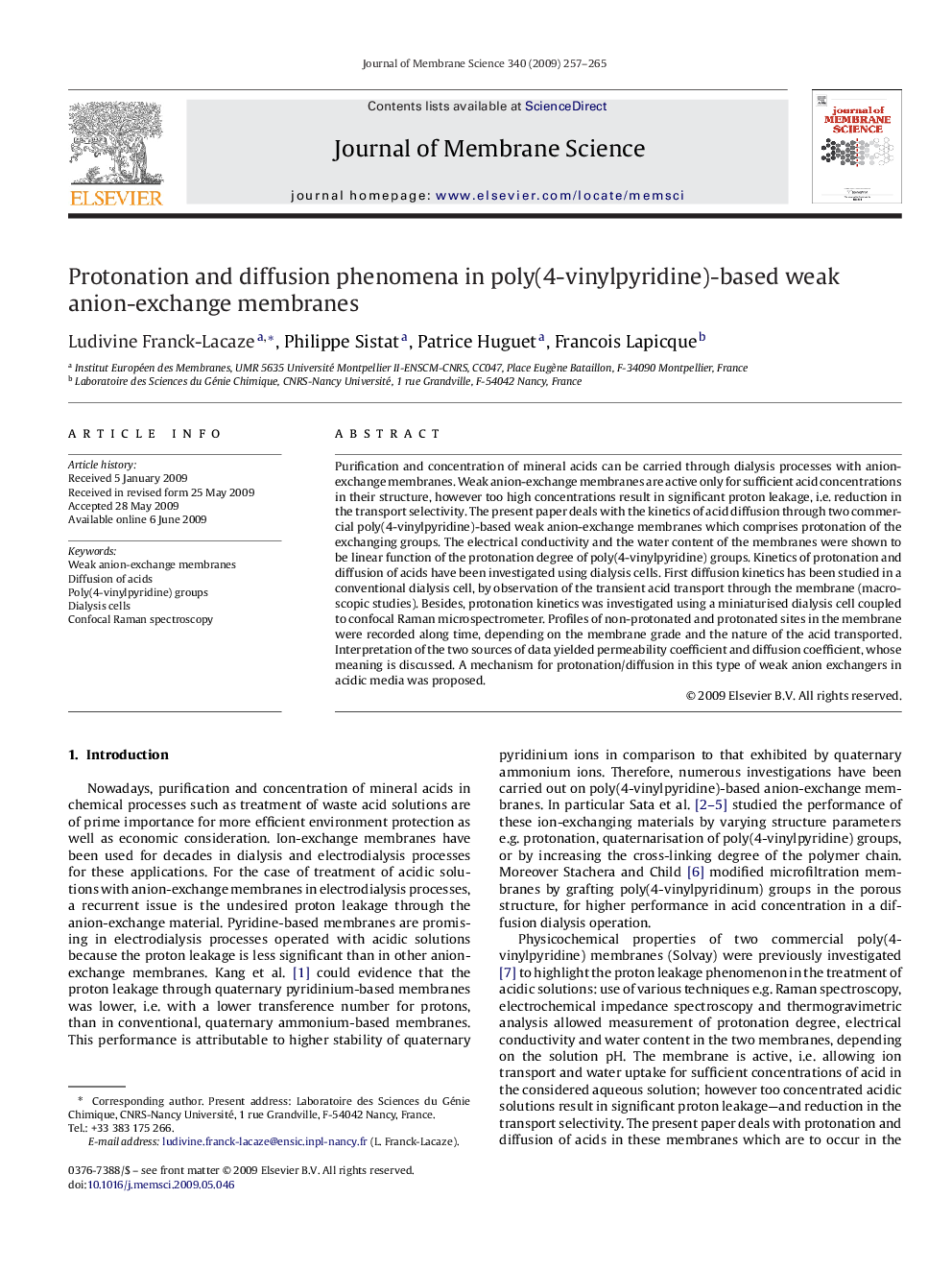| Article ID | Journal | Published Year | Pages | File Type |
|---|---|---|---|---|
| 636654 | Journal of Membrane Science | 2009 | 9 Pages |
Purification and concentration of mineral acids can be carried through dialysis processes with anion-exchange membranes. Weak anion-exchange membranes are active only for sufficient acid concentrations in their structure, however too high concentrations result in significant proton leakage, i.e. reduction in the transport selectivity. The present paper deals with the kinetics of acid diffusion through two commercial poly(4-vinylpyridine)-based weak anion-exchange membranes which comprises protonation of the exchanging groups. The electrical conductivity and the water content of the membranes were shown to be linear function of the protonation degree of poly(4-vinylpyridine) groups. Kinetics of protonation and diffusion of acids have been investigated using dialysis cells. First diffusion kinetics has been studied in a conventional dialysis cell, by observation of the transient acid transport through the membrane (macroscopic studies). Besides, protonation kinetics was investigated using a miniaturised dialysis cell coupled to confocal Raman microspectrometer. Profiles of non-protonated and protonated sites in the membrane were recorded along time, depending on the membrane grade and the nature of the acid transported. Interpretation of the two sources of data yielded permeability coefficient and diffusion coefficient, whose meaning is discussed. A mechanism for protonation/diffusion in this type of weak anion exchangers in acidic media was proposed.
